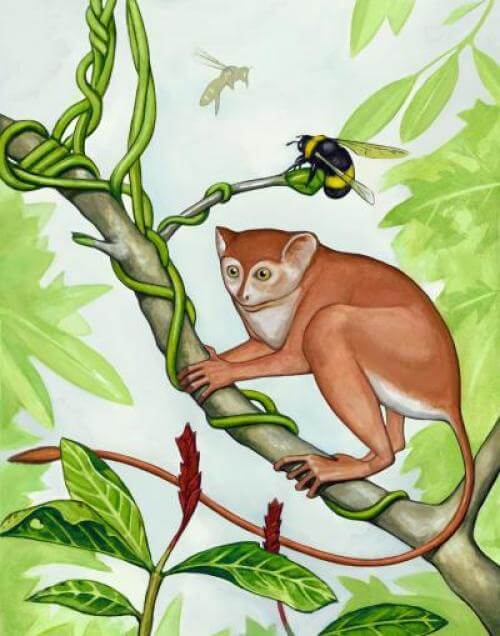A nearly complete skeleton of a tiny creature supports the theory of the ancient ancestor of the primate lineage that led to man

An international team of paleontologists, including Dan Gebo from Northern Illinois University, announced the discovery of a nearly complete skeleton of a 55-million-year-old tree-dwelling small primate. The remains of the primate were discovered in a layer of slate formed from sedimentary deposits in a lake in what is now central-eastern China and estimated to be between 54.8 and 55.8 million years old, Ni says. Byrd adds that fossil fragments of primates have already been uncovered in this area, but these mainly consisted of teeth and a few jaw bones. The oldest well-preserved primate skeleton to date came from a 48-million-year-old layer.
The almost complete skeleton was discovered in China in 2002 and it took ten years to decipher it, promoting the idea that the group of ape-like primates that today include monkeys, apes and humans appeared at least 55 million years ago. The fossil primate does not belong to this lineage, but it is the oldest relative of the tree-dwelling primates called tarsiers, showing that even in these early times, the tarsiers and the hominin group were separate.
The researchers estimate that the creature with thin limbs and a long tail described yesterday in the journal Nature was the size of a dwarf mouse lemur and weighed 20-30 grams.
The creature contained a curious mixture of features, with the skull, teeth and arm bones being in proportions reminiscent of tarsiers but the heel and leg bones more reminiscent of ape-like primates. "We've never seen this combination of features in any primate - living or fossil," said lead researcher Christopher Beard, a paleontologist at the Carnegie Museum of Natural History in Pittsburgh, Pennsylvania.
By analyzing 1,200 morphological aspects of the fossil and comparing them to 156 other mammals, team members were able to place the ancient primate near the base of the tarsier family tree. The creature, which you have been given the scientific name Archicebus achilles can be translated as "the original long-tailed monkey"
The fossil, from the Eocene period, was discovered in Hubei province in central China. "This is the best primate skeleton of this quality and integrity ever discovered and one of the oldest primate fossils ever discovered," says Gebo.
The origin of the primates is the milestone of the entire primate lineage, including that of man. Thanks to the completeness, we get more information and better evidence for the development and evolutionary adaptation of the primate lineage."
The team of researchers, led by Xijun Ni of the Institute of Cretaceous Paleontology (IVPP) at the Chinese Academy of Sciences in Beijing, describes the fossil in the June 6 issue of the journal Nature.
The number of anatomical features studied by Bird and his colleagues is much greater than is customary in a single study, mainly thanks to high-resolution scanners, the good level of preservation of the fossil, as well as strenuous team work that lasted ten years. "This is fantastic and impressive work," says Zhe-Xi Luo, a dune paleontologist at the University of Chicago in Illinois. "Every detail that could be extracted from these fossils was examined."
Byrd also adds that because the fossil indicates that the tarsiers and primate groups had already split at the same time, he and his colleagues speculate that the split happened shortly before that, but there is no solid evidence for this.
to the notice of the researchers

3 תגובות
All this research is unnecessary, they were going to ask Shimon Peres what happened in that period.
Here is the fossilized skeleton as found
http://www.nature.com/news/oldest-primate-skeleton-unveiled-1.13142